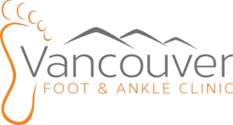While running can be good for the heart and the body’s overall fitness, the repetitive stress of running on the feet and legs can increase your risk of injury over time. These potential injuries range from the mildly annoying to those requiring surgery. To take proper care of your body, make sure that you stretch properly, wear appropriate footwear, and listen to your body when it tells you to rest.
A few common running injuries include:
Shin Splints : “ Shin splints” is a term to describe pain and swelling in the front of the lower leg. The pain usually appears during or after and is aggravated by repetitive activities such as running or walking. Contributing causes are flat feet, calf tightness, improper training techniques, worn out or improper shoes/sneakers, as well as running or walking on uneven surfaces. The inflammation in the shin results from the repeated pull of a muscle in the leg from the shin bone (tibia). Left untreated, shin splints can cause fracturing to the tibia.
Achilles Tendonitis : Achilles tendonitis is a painful condition of the tendon in the back of the ankle, commonly referred to as the heel cord. Left untreated, Achilles tendonitis can lead to an increased risk of Achilles tendon rupture. Athletes and “weekend warriors” are at high risk for developing disorders of the Achilles tendon.
Plantar Fasciitis : Plantar fasciitis is an inflammation of the band of tissue (the plantar fascia) that extends from the heel to the toes. In this condition, the fascia first becomes irritated and then inflamed, resulting in heel pain. People with plantar fasciitis often describe the pain as worse when they get up in the morning or after they have been sitting for long periods of time. After a few minutes of walking, the pain decreases because walking stretches the fascia. For some people, the pain subsides but returns after spending long periods of time on their feet.
Arch Pain : Pain across the bottom of the foot at any point between the heel and the ball of the foot is often referred to as arch pain. Although this description is nonspecific, most arch pain is due to strain or inflammation of the posterior tibial tendon (PTTD) or the plantar fascia (a long ligament on the bottom of the foot). In most cases, arch pain develops from overuse, unsupportive shoes, weight gain or acute injury.
Turf Toe : Turf toe is a sprain of the big toe joint resulting from injury during sports activities. The injury usually results from excessive upward bending of the big toe joint. The condition can be caused from either jamming the toe, or repetitive injury when pushing off repeatedly when running or jumping. Although this injury is most commonly reported in football players, participants in soccer, basketball, wrestling, gymnastics and dance also are at risk.
Sesamoiditis: In the normal foot, the sesamoids are two pea-shaped bones located in the ball of the foot, beneath the big toe joint. The sesamoids help the big toe move normally and provide leverage when the big toe “pushes off” during walking and running. The sesamoids also help absorb the weight placed on the ball of the foot when walking, running, and jumping. Sesamoid injuries can involve the bones, tendons, and/or surrounding tissue in the joint. They are often associated with activities requiring increased pressure on the ball of the foot, such as running, basketball, football, golf, tennis, and ballet. In addition, people with high arches are at risk for developing sesamoid problems. Frequent wearing of high-heeled shoes can also be a contributing factor.
Stress Fractures: Stress fractures are tiny, hairline breaks that can occur in the bones of the foot. They can be caused by overtraining or overuse, improper training habits or surfaces, improper shoes, flatfoot or other foot deformities, and even osteoporosis. These tiny breaks in the bones of the feet can lead to a complete break if left untreated.
Again, to help decrease the chance of these injuries, properly prepare your body ahead of time for the impending exertion. And whether you’re a long time runner or just starting out, always see a foot and ankle specialist before beginning a new running regimen. We treat all sports medicine injuries of the foot and ankle and can help teach you preventive measures to keep your feet and legs healthy at any activity level.
